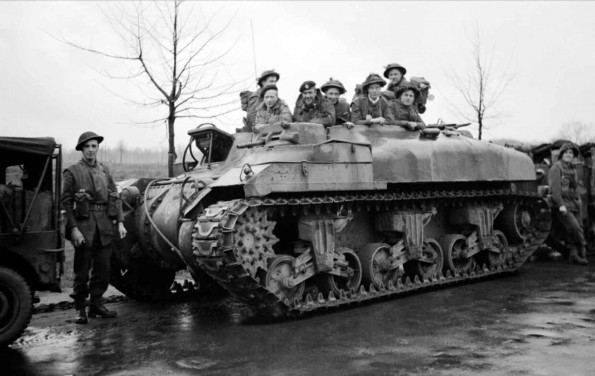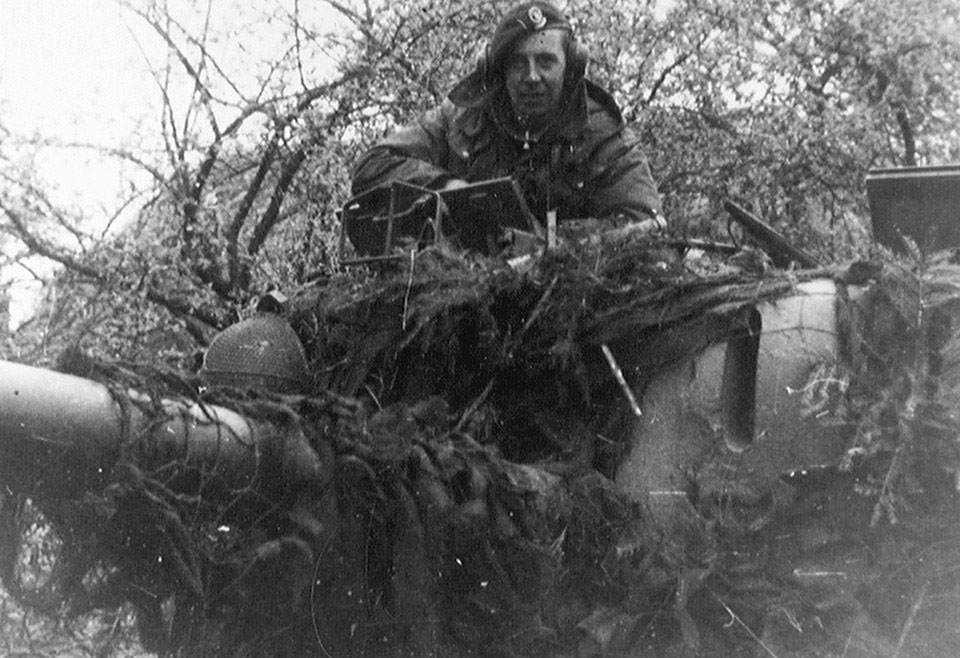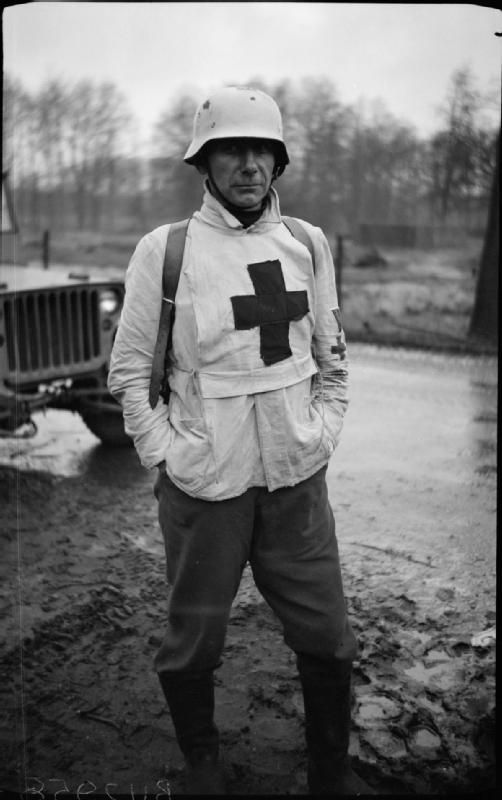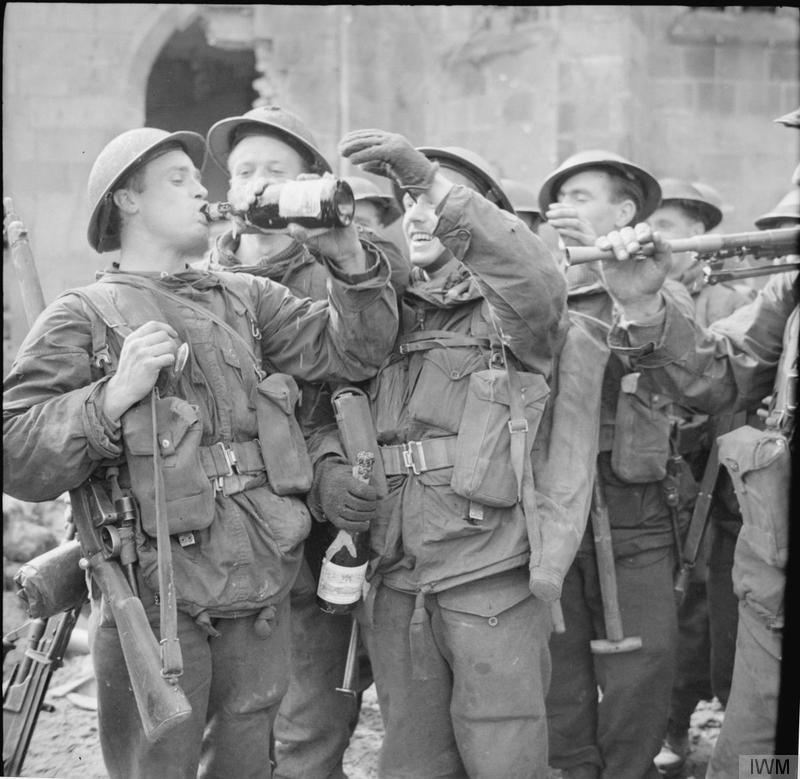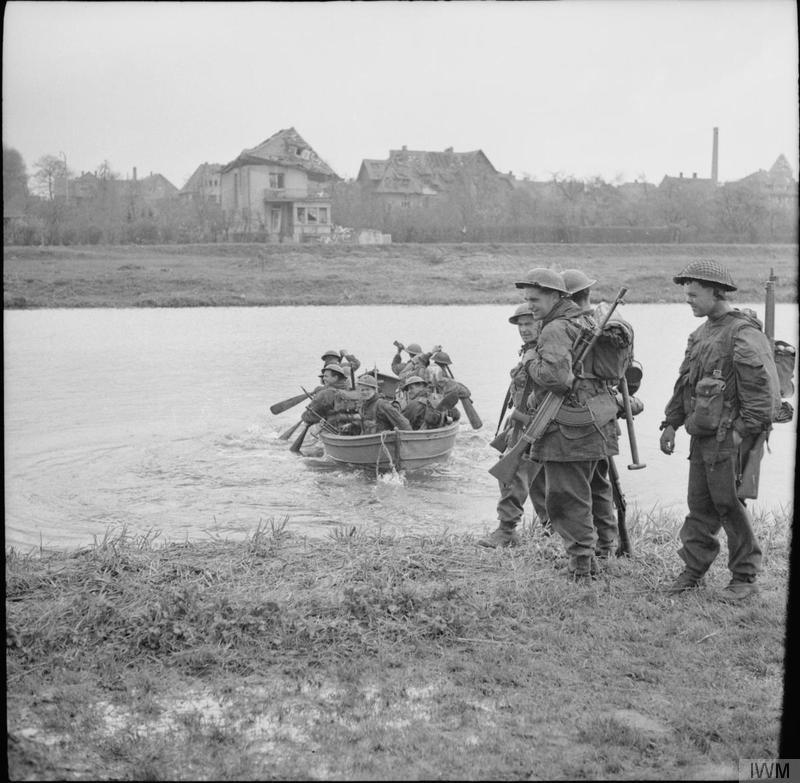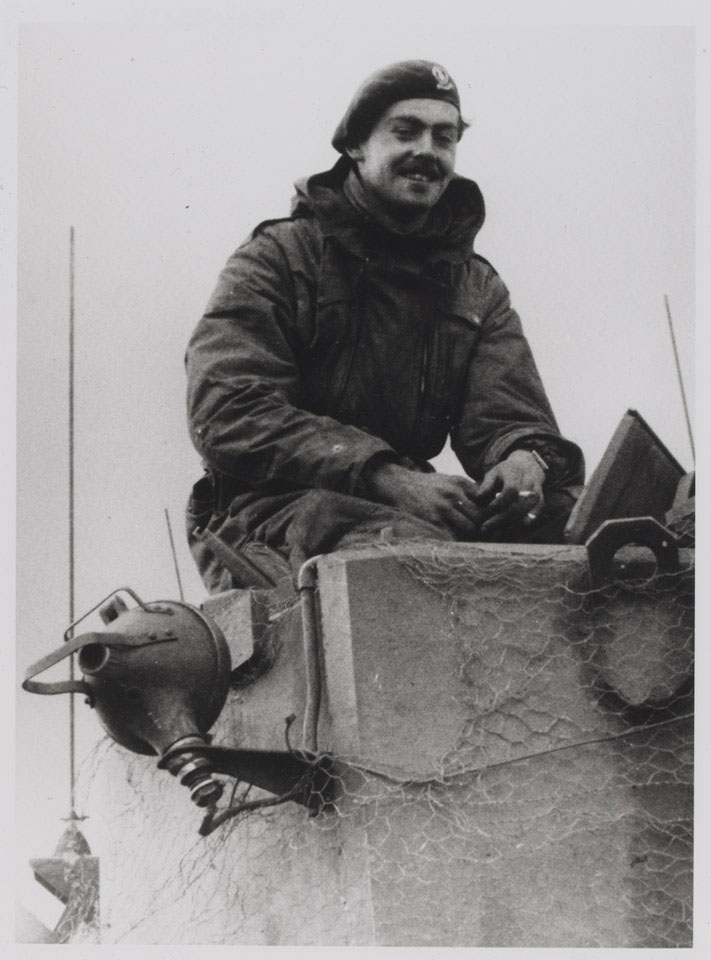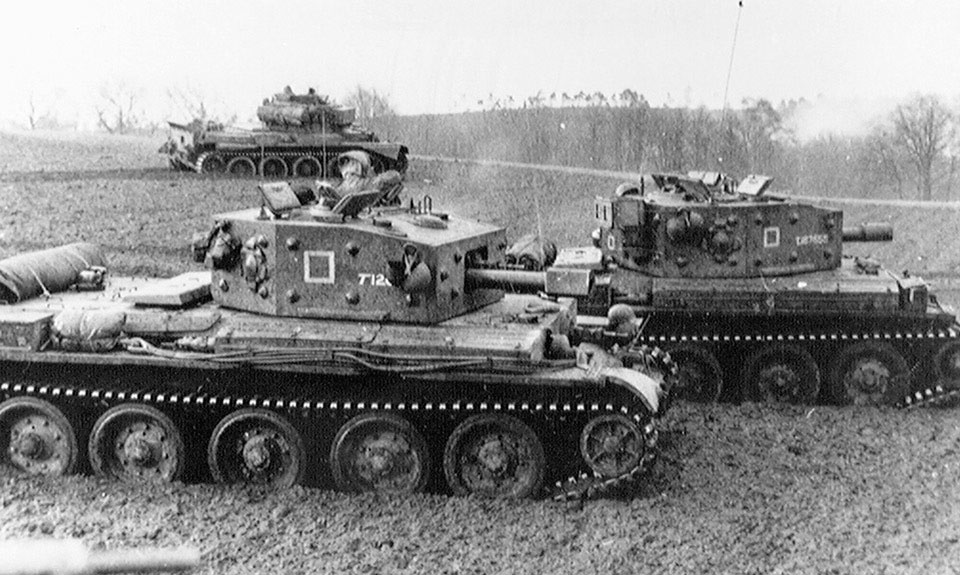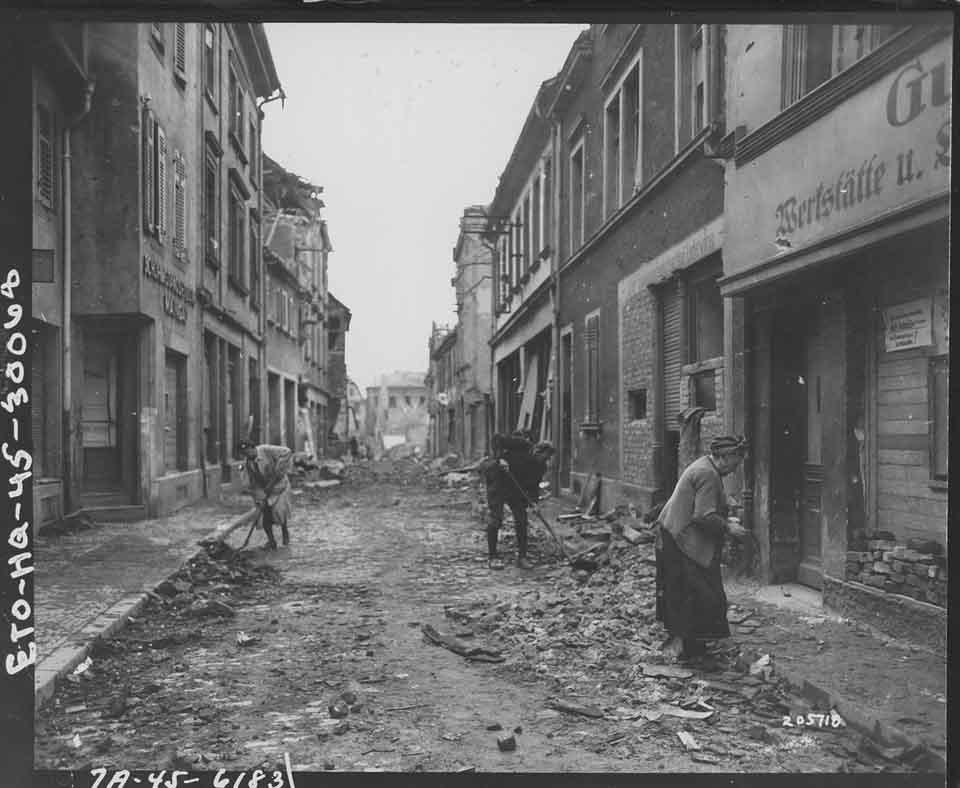Air Operations, CBI
BURMA- Most of the 10th Air Force is grounded by bad weather, but a small number of fighter-bombers are able to attack troops near Kenglong.
- 14th Air Force fighter-bombers attack the airfield at Yangtong, bridges at several locations, and a number of targets of opportunity.
- 43 22nd and 43rd Heavy Bomb group B-24s attack the Hong Kong port area, where at least 2 ships are sunk.
- V Bomber Command B-25s attack North Hainan Island.
- 17 341st Medium Bomb Group B-25s attack bridges at 3 locations, rail yards at Ninh Binh, and the town area at Pinglo, China.
- 14th Air Force fighter-bombers attack rail yards at Hai Duong and several targets of opportunity.
- 7th Heavy Bomb Group B-24s destroy a bypass bridge (the 'Bridge on the River Kwai') with Azon bombs.
Air Operations, East Indies
V Bomber Command A-20s attack Tarakan Island.
[Air Operations, Europe
RAF BOMBER COMMANDDaylight Ops:
- 247 Lancasters and 8 Mosquitos of Nos. 1 and 8 Groups are sent to attack what is believed to be military barracks near Nordhausen. Unfortunately, the barracks house a large number of concentration camp prisoners and forced workers of many nationalities who work in a complex of underground tunnels where various secret weapons are made. The camp and the tunnel workshops had been established immediately after Bomber Command attacked the rocket research establishment at Peenemünde in August 1943.
The bombing is accurate and many people in the camp are killed, the exact number is not known. The men working in the tunnels are unhurt. - 2 Lancasters are lost.
Minor Ops:
- 95 Mosquitos are sent to Berlin, 8 to Plauen and 5 to Magdeburg, 9 Lancasters are sent to lay mines in the Kattegat but are recalled because of weather conditions, and there are 17 Mosquito patrols.
- 1 Mosquito is lost on the Magdeburg raid.
GERMANY:
- 218 1st Air Division B-17s and 499 3rd Air Division B-17s attack two U-boat yards at Kiel.
- 2 B-17s and 4 of 636 VIII Fighter Command escorts are lost.
GERMANY:
- Approximately 230 9th Air Division bombers attack two marshalling yards and a defended town.
ITALY:
- 12th Air Force B-25s attack bridges at three locations.
- XXII TAC P-47s attack methane plants, fuel dumps, communications targets, and road and rail targets throughout northern Italy.
Air Operations, Formosa
- V Bomber Command B-24s and 38th Medium Bomb Group B-25s attack the airfield at Kagi.
- V Bomber Command A-20s sweep the island’s rail lines.
- 35th Fighter Group P-47s down 2 A6M Zeros and 1 Ki-45 'Nick' fighter near Takao at 1500 hours.
Air Operations, Japan
During the night 61 of 115 73rd Very Heavy Bomb Wing B-29s dispatched attack an aircraft plant at Tachikawa, and 49 B-29s attack other targets. 43 of 78 313th Very Heavy Bomb Wing B-29s dispatched attack an aircraft factory at Koizumi, and 18 B-29s attack other targets. 48 of 49 314th Very Heavy Bomb Wing B-29s attack an aircraft plant at Shizuoka. 1 73rd Wing B-29 is lost. 9 313th Very Heavy Bomb Wing B-29s sow mines off Hiroshima.
[Air Operations, Philippines
V Bomber Command A-20s and FEAF fighter-bombers attack numerous targets on Luzon and in the central Philippines.
[Air Operations, Ryukyus
- During the wee hours of April 3, a US Navy radar picket destroyer due north of Okinawa comes under continuous air attack by Japanese aircraft no doubt testing the responsiveness of the picket barrier around the invasion fleet. US Navy night fighters twice drive off the attackers and possibly down 2 of them.
- Despite bad weather and heavy seas, US carrier aircraft cover and support the invasion forces. Task Force 57 Royal Navy carrier aircraft attack targets in the Sakishima Islands.
- An LST bearing equipment for a US Marine Corps fighter squadron is struck by a kamikaze, and most of the aviation equipment is consumed in fires. Also, the escort carrier USS Wake Island is damaged when a kamikaze near misses her at about 1745 hours, and she must retire to Guam for repairs. VOC-1, whose special capabilities are required by the fleet, transfers to USS Marcus Island while VC-87 takes its place aboard the retiring USS Wake Island.
- VMF-451 carrier-based F4Us down 1 A6M Zero at sea at 1400 hours and 10 A6Ms over the Wan airfield on Kikai Shima during the afternoon.
- US carrier-based F6Fs, F4Us, and FMs down 45 Japanese aircraft over the Ryukyus between 1610 and 1845 hours.
Baltic Sea
- U-1221 is bombed and sunk while secured to Buoy A7 in Kiel Bay.
- U-2542 and U-3505 are destroyed while under construction at Kiel in a raid by the US 8th Air Force.
| Class | Type IXC |
| CO | Oberleutnant zur See Paul Ackermann |
| Location | Baltic, Kiel Bay |
| Cause | Air attack |
| Casualties | 7 |
| Survivors | 11 |
|
|
Battle of the Atlantic
- US Army aircraft sink the German submarines U-1221, U-2542 and U-3505 at Kiel, Germany.
- U-1276 is sunk in a joint attack by Liberator 'U' of No 224 Squadron and the British sloop Amethyst.
| Class | Type VIIC/41 |
| CO | Oberleutnant zur See Karl-Heinz Wendt |
| Location | North Atlantic |
| Cause | Depth charge |
| Casualties | 49 |
| Survivors | None |
Eastern Front
Rodion Malinovsky's forces, the 2nd Ukraine Front, reach the open country around Vienna; the German Army Group South under Otto Wöhler, is in danger of disintegrating. The Russian advance has so far maintained a pace of 15-20 miles a day. The Soviet Supreme Command has issued a proclamation to the Austrians, explaining that the aim of the Russians is the destruction of Nazism, not of nations. Meanwhile Hitler's orders are: 'Hold Vienna'. Defending the city is the 6th SS Panzer Army, with 8 armored divisions, and against them are the 46th Army of the 2nd Ukraine Front and the 4th Army, 9th Guards Army and the 6 Armored Army of the 3rd Ukraine Front. Russian superiority in manpower is enormous.
Between Hungary and Austria the German 2nd Panzer Army continues to fight in the Nagykanizsa area along the valley of the Raba (Raab). The Russians have breached the German defenses between Wiener Neustadt and Lake Neusiedler.
There is also fierce fighting in the other sectors of the front, especially near Bratislava, already besieged by the 2nd Ukraine Front. In Hungary, Russian and Bulgarian troops mop up the area southwest of Lake Balaton and penetrate across the Drava into Yugoslavia.
SLOVAKIAThe Soviet 7th Guards Army is shelling the defenses of Bratislava.[MORE]
[Okinawa
In the III Amphibious Corps sector, north of the beachhead, the 6th Marine Div advances about 5 miles toward the center of the island, while the 1st Marine Div moves out along the Katchin peninsula, on the east coast, advancing as far as Hizaonna. The XXIV Corps, south of the bridgehead, makes a converging movement southward, with the 7th Div on the left and the 96th on the right. The 7th Div comes down the east coast of the island as far as Kuba, while the 96th advances less rapidly inland and on the west coast.
The escort carrier Wake Island (CVE-65) is seriously damaged by a Japanese suicide aircraft off Okinawa. Other US ships damaged during the day include the destroyer Sproston (DD-577) by a dive bomber, the high-speed minesweeper Hambleton (DMS-20) by a kamikaze and the landing craft LST-554 by a storm.
[Pacific
The US motor minesweeper YMS-71 is sunk by a mine off Sanga Sanga, Borneo.
[Philippines
Small American units, part of the US 40th Div, land on Masbate Island to assist the Filipino guerrillas who have controlled part of it for several days. There is intense fighting on Negros and Cebu, where authority if given for the transfer of the 164th Regimental Combat Group from Leyte.
[United States, Command
The Joint Chiefs of Staff appoint Gen MacArthur Commander-in-Chief of all American land forces in the Pacific and Adm Nimitz Commander-in-Chief of all naval forces.
[United States, Planning
8th Army plans to land X Corps, commanded by Maj-Gen Franklin C. Sibert, with the 24th and 31st Infantry Divisions, on the west side of Mindanao. The 24th will land and capture the airfield at Malabang; two days later the 31st Infantry Division will land at Parang to control Highway 1, the main road to Davao. Rear-Adm Albert G. Noble's task group will support the landings. Before the landing at Malabang takes place, the guerrillas notify the Americans that the airfield is already secured. Marine aviators from Dipolog land on the airfield and attack Japanese positions. [Western Front
Around Lingen the XXX Corps, British 2nd Army, reaches the Dortmund-Ems Canal.
In the US 9th Army sector the XIII Corps, after completing the capture of Münster which was done by the 17th Airborne Div, goes on to reach the Weser. Farther south, the XIX Corps continues its advance to the east and begins to exert pressure on the German pocket in the Ruhr.
The XVIII Airborne Corps and the III Corps, US 1st Army, begin operations against the Ruhr pocket, the first in the area between the Rur River, in the north, and the Rhine, in the west, the second between the Lenne ane Rur Rivers.
The 80th Div, XX Corps, US 3rd Army, continues the battle for Kassel.
After 3 days of savage fighting, Aschaffenburg surrenders to the 45th Div, XV Corps, US 7th Army. The XXI Corps goes into the attack against Würzburg, on the Main, and succeeds in establishing a bridgehead in the western part of the town.
The French 1st Army, engaged in extending its bridgehead on the line Lichtenau-Pforzheim-Ludwigsberg, captures Karlsruhe and prepares to occupy the Black Forest.
[Images from April 3, 1945
|
|
|
|
|
|
|
|
